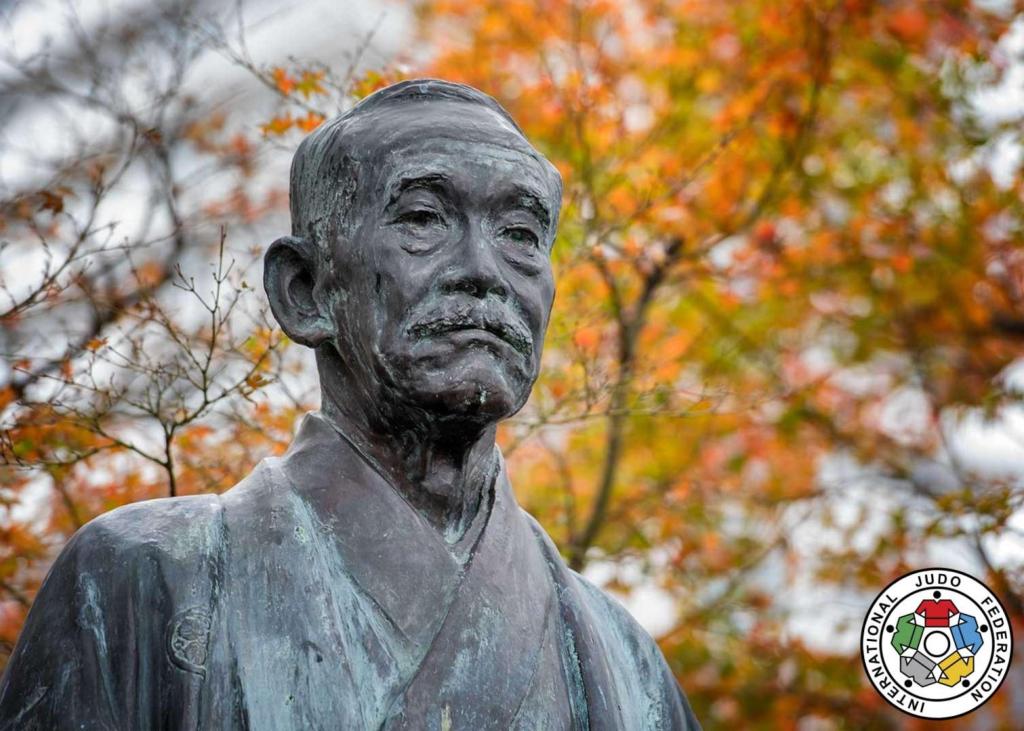Despite the current global pandemic massively affecting the daily lives of our athletes and practitioners and of course the possible postponement of the Olympic Games 2020 in Tokyo, we are able to reflect on the importance of judo, not only as a sport but an education.
Associate Professor in Japanese Language and Civilisation from the University of Toulouse Jean Jaurès and member of the EJU Scientific Commission, Mr Yves Cadot (6th Dan), has translated original text from Jigoro Kano, firstly in to French – with the link available in his quote directly below – and then in to English.
“Because many of us are frustrated in these days of closed dojos, deprived of the physical link to our discipline, to others, and because judo teaches us to transform situations into opportunities, I suggest we take this opportunity to take an account of our own practice through the writings of Kanô Jigorô.
The idea is to offer every day, until the reopening of the dojos, a quote, a few lines or pages, raw, without comments (but sourced!) to feed our knowledge, feed our thinking, cultivate us. You will find them, if possible in the early morning, in my Hypotheses.org research notebook (Le dire en corps), in the section ‘Une journée, un texte’.”
Part One: For the attention of judo specialists.
“There are many kinds of judo specialists. If we roughly divide them, there are, first of all, the people who think about making the current judo even more complete and dedicate themselves to this research, then there are those who, having opted for one part, whether it is the physical education, the training of the mind or that of attack – defence, devote themselves to it or else teach it as their job and, the third, those who are really in charge to teach in the countless schools and dojo of today. As there are very few in the first two categories today, I intend to speak here primarily for the benefit of the third.
Even among people in this third category, there are certainly some whose disposition to research falls into the first category. Just as there are probably some, like those of the second, to be more particularly interested in one part more than another. However, in general, surely we can say that these are people for whom teaching occupies the central position and who, in parallel, gradually deepen their research. It is my wishes for these people in terms of education, instruction, self-training that I wish to express here. It is obvious that the pedagogy and the training of judo must differ in their methods according to the type of people who receive this teaching.
For example, if you are teaching in the police, you should teach it mainly as a method of attack – defence, but in a school, you will insist on strengthening the body and training the mind. However, it is because, in general, these three aspects are taught together that the value of judo is particularly recognised. This is why the teacher must seek to teach and exercise simultaneously from these three directions. From an educational point of view, what we have to take care of first is that beginners do not hurt themselves, it is obvious, but also that they do not suffer. A person who is just starting out, even if he does not get injured, will stop training if it is painful and, even if he continues, he becomes stiff and is no longer capable of good techniques. Paying the utmost attention to children and taking into consideration they are children, and the same for adults, and taking care not to make them feel pain, we have to make them continue the practice as much as possible.
For this, we must first think carefully about the teaching method and, secondly, to apply it without limiting our efforts. Third, you have to work on arousing interest. So, once they get used to it little by little, even if, by mistake, you sometimes throw them hard, they will be able to accept it serenely. What we then need to watch out for is to think about the order of the techniques we teach taking into account the physical and mental state of people. And also to explain the techniques according to their degree of understanding. We shouldn’t start to teach too many techniques too early but, if we do not introduce new ones sometimes, the interest is not aroused and there is a risk that, trying to do almost all the time the same technique, the body adopts a deformed shape. Second, accepting that the one who teaches should fall systematically is not proportionate to the immense effort he gives. Conversely, practically only throwing is not suitable either. The best thing is to multiply the situations where each person attacks up until the point where the other is about to fall and, with a little more effort he would fall, then put him back on balance. Having said this, if the appropriate situation arises, the throw must be completed in order to naturally raise awareness of the breathing in which the technique should be executed. In short, it is necessary to add ingenuity to ingenuity and to spare no effort.”
Related Articles – WORKING TRANSLATION OF JIGORO KANO
Part 1
Part 2
Part 3
Part 4
Part 5
Author: Sören Starke




